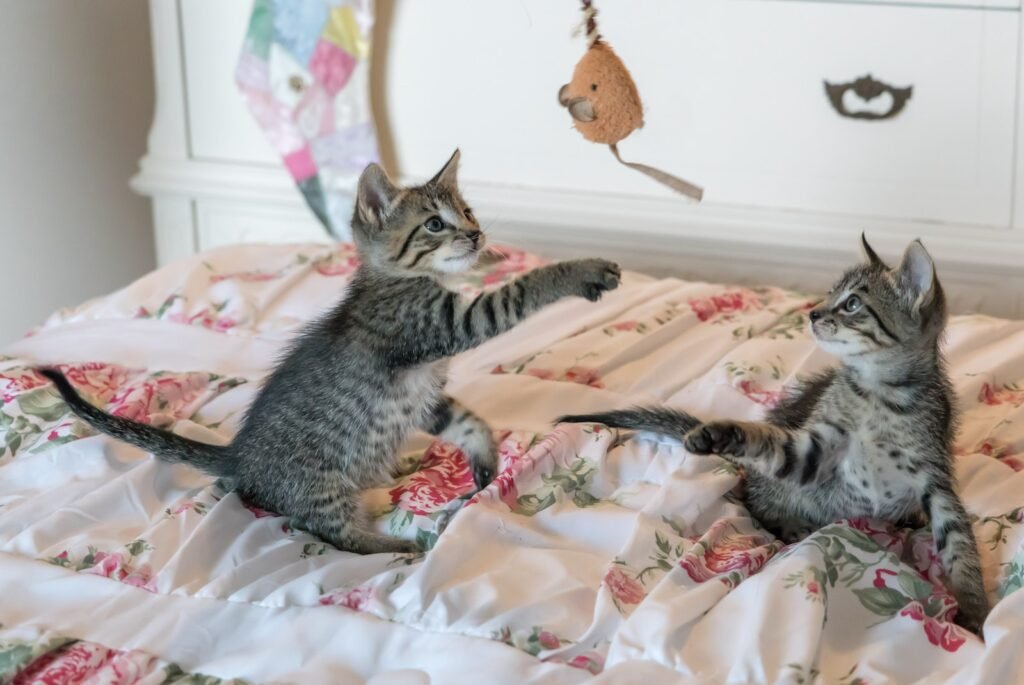How to recognize and treat common skin issues in cats.
Do you ever catch yourself staring at your cat’s skin, wondering if that patch of dryness or flakiness is normal? Or have you noticed them constantly scratching and grooming themselves more than usual? As much as we love our feline friends, they can’t verbally tell us when something is wrong.
That’s why it’s important to know how to recognize common skin issues in cats and what steps to take to treat them effectively. In this blog post, we’ll explore everything from fleas to allergies and provide practical tips on how to keep your furry friend looking and feeling their best. So grab a cup of tea (or catnip) and let’s dive in!
The Anatomy of the Cat’s Skin

The skin on a cat is very similar to the skin on a human. It is made up of many layers, and each layer has a specific function. The outermost layer is the epidermis. This is the surface layer that you see. Underneath the epidermis is the dermis.
This layer contains lots of collagen and other proteins which give the skin its strength and elasticity. The subcutaneous tissue (the layers below the dermis) provides fat storage and protection from friction and abrasion. Beneath all of these layers is the muscle and connective tissue layers which provide support for the skin.
When skin problems occur in cats, they can generally be categorized into two types: external (extracutaneous) problems and internal (intracutaneous) problems. External problems include conditions such as fleas, mites, whitehead outbreaks, redness around the eyes resulting from allergies or hay fever, dry skin caused by environmental stressors like changes in temperature or humidity, etc., while internal problems involve issues with underlying organ systems such as gastrointestinal distress or urinary tract infections.
There are several things you can do to help manage your cat’s skin health: feed them a healthy diet that includes appropriate amounts of protein and calories; provide them with adequate water every day; keep their environment clean; remove any excess fur; check their ears regularly for wax build-up; encourage them to exercise outdoors; get them vaccinated against common canine and f eline viruses.
Causes of Skin Diseases in Cats
Skin diseases in cats can be caused by a variety of factors, including bacterial and viral infections, allergies, genetics, underlying health issues, and grooming habits. Some common skin conditions in cats include skin lesions (such as scabies or pyoderma), atopic dermatitis, dry skin, patchy coat distribution, pet dander accumulation, and fat accumulation under the skin.
To determine the cause of a skin condition in a cat, it is important to gather information about the cat’s health history and lifestyle. If the condition is new or worsening, it is also necessary to perform an appropriate diagnostic test.
Once the underlying cause of the skin disease has been determined, appropriate treatments can be administered. In most cases, treating the underlying health issue will lead to an improvement in the cat’s skin condition.
Treatment Options for Common Skin Diseases in Cats
There are a variety of treatments available for common skin diseases in cats. In many cases, treatment is simply a matter of following a doctor’s prescribed regimen. However, there are also many self-care treatments that can be effective in treating skin problems in cats.
Some of the most common skin conditions in cats include fleas and chronic itching. Flea control is important not only to prevent larvae from burrowing into the cat’s skin, but also to reduce the incidence of allergic reactions to fleas.
Calamine lotion and hydrocortisone cream are commonly used topical medications for controlling fleas. Anti-inflamatory drugs such as ibuprofen or ketoprofen can be used orally to relieve pain and inflammation from conditions such as irritable bowel syndrome or pyoderma .
Chronic itching can be caused by a variety of factors including allergies, parasites, bacteria, and weather changes. Many self-care treatments for chronic itching in cats involve application of topical creams or sprays containing antihistamines or corticosteroids .
Selected supplements may also provide relief from itchiness such as omega fatty acids , probiotics , amino acids , melatonin , or mineral oil . Coconut oil is a natural moisturizer that has been shown to be effective when applied topically to the skin. Coconut oil can also be used as an alternative petroleum jelly lubricant when dealing with feline urinary tract infections (UTIs).
The Different Types of Skin Conditions in Cats

Cats have a variety of skin conditions that can be caused by various factors including allergies, genetics, environment, and skin health.
Here are the different types of skin conditions in cats:
1] Pruritus (itching) is an often chronic skin condition in cats that is typically caused by an allergic response to environmental or food allergens. It can manifest as a scratchy sensation on the cat’s skin, which may lead to secondary infections. Treatment usually involves avoiding the triggering substance and administering a topical cream or ointment.
2] Dermatitis (skin inflammation) occurs when the normal protective layer of skin cells becomes inflamed and irritated. This can happen due to triggers such as fleas, bacteria, fungi, or environmental factors such as pollution. Dermatitis can be localized or generalised and can be difficult to treat because it doesn’t always respond well to traditional veterinary treatments. Treatment typically involves using topical creams and antibiotics to clear up the inflammation and alleviate symptoms.
3] Alopecia (hair loss) is a common condition in cats that affects both sexes equally. The cause of alopecia is unknown but it is thought to be related to underlying medical problems or environmental factors such as diet and stress levels. Alopecia can be severe and result in bald patches on the cat’s body surface or total hair loss throughout its coat. Treatment usually involves treating underlying medical problems if they are known and providing emotional support for the cat .
4] Fungal infections are a common cause of skin inflammation in cats and can cause severe itching and swelling. These infections usually occur in areas of the body that are moist and warm, such as the groin, underarms, and around the vagina. Fungal infections can be difficult to treat because they often respond poorly to conventional veterinary treatments.treatment typically involves using anti-fungal medications, topical creams, and oral antibiotics.
How to Recognize a Problem with Your Cat’s Skin
Your cat’s skin may seem healthy on the surface, but there may be problems below the surface.
Be aware of these issues and take appropriate steps to treat them if they occur:
1) Dry skin: One common problem with cats is dry skin. The skin becomes thin and fragile, making it more prone to cracks and other damage. To help your cat get relief from dry skin, provide a good scratching post for him or her to use, provide plenty of good catnip toys, and make sure his or her diet contains enough moisture. See your veterinarian for further instructions on correcting a low food intake or addressing other underlying health issues.
2) Itchy skin: Another common issue with cats is itchy skin. This can be caused by a variety of factors, including allergies, fleas and parasites, environmental allergies, Chemical sensitivities (including urine odors), genetic causes (such as coat texture), hot spots (from rug burns or sunburns), disease (such as herpes), and supplements your cat may be taking (such asishi bark). Some of the treatments for itchy cats include topical anti-inflammatory medications such as NSAIDs (non-steroidal anti-inflammatory drugs), corticosteroids such as prednisone , shampoos containing conditioning ingredients such as lactic acid , prescribed diets that contain specific proteins or vitamins that are known to improve haircoat quality (such as Hill’s Science Diet ), homeopathic remedies such as corn oil , cry otherapy (where the cat is briefly exposed to -40 degrees Celsius), and application of a warm, wet cloth to the cat’s skin. Consult your veterinarian for more specific recommendations.
3) Gross lesions or ulcers: If your cat starts having gross lesions or ulcers on his or her skin, it’s important to take him or her to see a veterinarian as soon as possible. These lesions can be caused by a variety of factors, including allergies, infection, parasites, cancer, and dietary deficiencies. Your veterinarian will perform a diagnostic roundup and may recommend treatment such as antibiotics , surgery to remove the lesion, or a combination of treatments.
Treatment of Common Skin Conditions in Cats
There are many common skin conditions in cats that can be treated with either over-the-counter medications or home remedies. Some of the most common issues include fleas, yeast infections, dry skin, and matting. There are also some rarer skin conditions that can occur, but if your cat has any of the more common conditions, it is usually easy to treat.
Fleas: One of the most common sources of irritation for cats is fleas. Fleas can live on humans and other pets and can easily infest your cat’s fur. It is important to take action to eliminate fleas from your cat’s environment as soon as possible since they can spread Lyme disease to both animals. If you cannot get rid of the fleas yourself, there are several over-the-counter treatments available that work well in most cases.
Yeast Infections: Yeast infections are another common issue that cats suffer from. They often exhibit a changed eating habits, itchiness, and redness around the anus or vaginal area. Yeast infections in cats frequently respond well to over-the-counter medicated baths or topical treatments like clomiphene hydrochloride (Clomid).
Dry Skin: Dry skin is another common problem for cats, caused by a combination of genetics and environment alterations like too much sunlight or artificial light exposure. Over-the-counter moisturizers help relieve dry skin and encourage healthy oil production in the skin. You may also want to consider using a veterinary moisturizer in cases of extreme dryness.
Mating Behavior: A common problem that can occur in cats during mating season is matting. This occurs when the cat’s fur becomes so tangled up that it is difficult for them to move or breathe. Matting usually disappears after mating season is over. If your cat appears to be struggling to groom themselves or is not clearing their fur regularly, you should take them to the veterinarian for an evaluation.
Conclusion
In this article, we will discuss some of the most common skin issues that cats can experience and how to treat them. We hope that this information will help you keep your cat healthy and happy!






